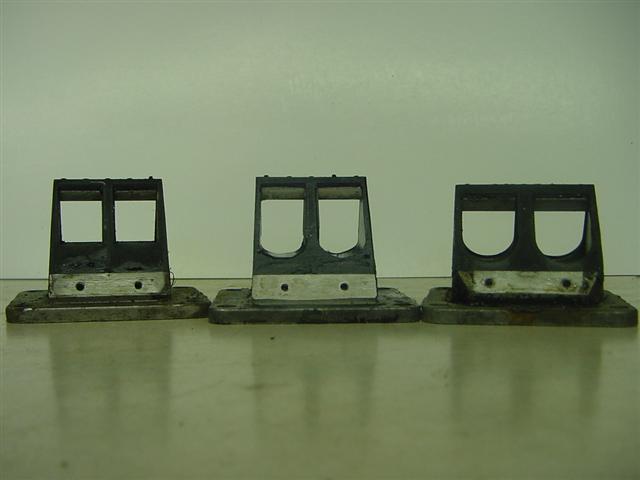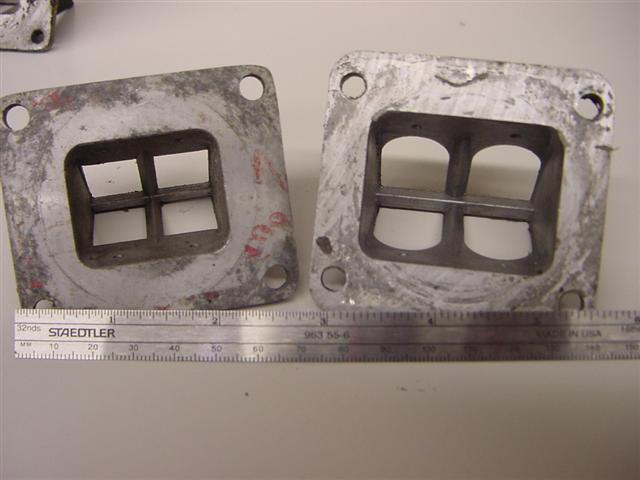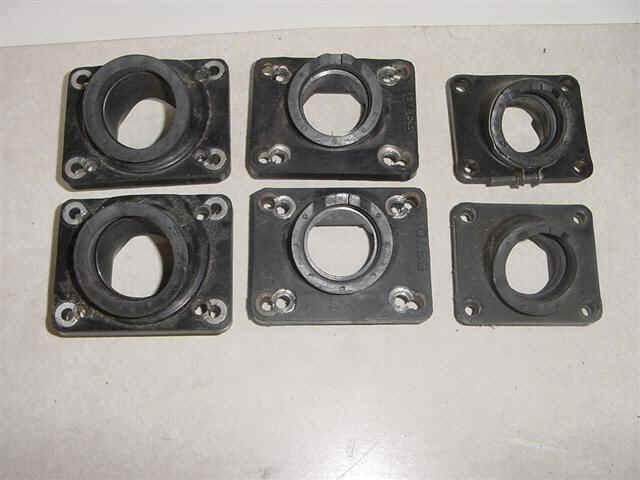
© Geoff Battick
This is an area you see and hear about a lot, because changing reeds is simple and pretty cheap to do compared to most other modifications. In the last few years I have become less and less impressed by the aftermarket reeds I have tried (blasphemy!).
I, and several Internet acquaintances who race and develop RD engines have failed to see the kind of gains that the ad's claim. I have seen dyno test results from John Robinson in his book on two stroke tuning that also show little in the way of HP boosts, but a small effect on the shape of the torque curve, something to the effect of giving an extra 500 revs of useable power either above or below the curve. This is not to say this line of development is a waste of time, but that there are more productive avenues to explore first.
If your engine is very fully developed and you wish to fine tune the curve even further, or to squeeze that last 500 rpm out of the powerband, then certainly look at your reeds. After all, all the little 2% gains added together can be a significant boost, but just don't expect instant power wheelies by simply bolting on the latest carbon fibre reed petals.

L to R: stock RD cage, modified RD cage, stock RZ cage

L-R: stock RD cage, stock RZ cage. There is a huge difference in flow area between these.
Reed Cages, on the other hand, can be a useful area to explore. I use RZ cages in all the full race RD engines that I build, since bigger carbs (usually 34's) are always used. The old trick was to use TZ750 cages, but they are scarce and expensive. They also required much more modifying of the inlet than the RZ parts need.
I think that big cages along with big carbs add a useful boost in power. I have used aftermarket reeds and stock reeds with RZ cages and here as well I fail to see much of a HP difference, so often stock reed petals get used, since they are usually supplied with the cages.
An interesting note here is that a racer I know who is developing an RD250 where he is limited to stock reed cages has reported very little difference in power when he had to re-install the standard ( but much modified ) smaller RD parts. Perhaps this phenomenon is limited to the 250, it certainly is something to study on a dyno some day with a 350. Formula RD requires standard cages, as well as AHRMA, so it bears looking into. If you do decide to use RZ cages, you will need different carb manifolds that match the larger interior of the RZ cages and whatever size carbs you use.

L-R: TZ manifold modified to fit RD/RZ, modified part sold by Spec2 for use with 34's on an RD/RZ, stock RD part
Again TZ750 parts can be modified to work, or call SpecII in California ( phone # 818-504-6364) who supplies manifolds for RZ cages for use with 34 and larger carbs for RD's and RZ's. Street engines, and racers on a budget can get a useful gain by modifying the stock cages a bit, but note that this will require the use of aftermarket reeds, since the OEM steel parts are prone to breakage on modified cages.
You can get a set of solid one piece reeds (TDR supplies these, I think) and simply remove the centre rib from the cages. This will shorten reed life, so you will want to inspect them occasionally. Racers should check every few race weekends, and you street guys are on your own. If the engines does anything funny, like pop or backfire through the carbs, or start hard, check 'em out.
Stock cages can also just have the inner edges of the " slots " filed smooth to eliminate the lip that is there, but leave the rubber on the outer edges!! You can also file or grind the slots out to a longer size if you wish, and leave the rib alone. This is the most reliable way to go, and you can then use any reed you wish. Some people also bend the reed stops to allow more flex by the reeds, but the jury is out on that one in my book. I've done it a few times, but some people who should know say this causes the reeds to flutter and do weird things that hurt power. Note that the same thing has been said about removing the centre rib, too.
This may be where those carbon fibre reeds might do the trick. I bypass the problem by just elongating the slots in standard RD cages and smoothing the protrusions for street engines and less serious race engines, and using RZ cages in all the full race engines I build. One more trick we used to do to our street bikes many years ago might interest you.
If you stick a standard reed cage with the reed stops attached into a spare cylinder you have lying around (you do have lots of old junk parts accumulated, don't you?) and look up from the bottom of the cylinder at the boost port you will see that the reed stop obstructs (serious engine guys like to say " shrouds ") the base of the boost port, hindering air-flow.
We used to snip, cut, or file the inner edges of the stops to form a notch that matched the boost ports entry, figuring it would aid the flow into the port. The stock steel reeds never broke after hundreds and hundreds of street squid miles, and we all thought we were pretty smart for doing it. Could not tell you dyno-wise if it made a difference or not, but it might!

|
 |
|
|
|